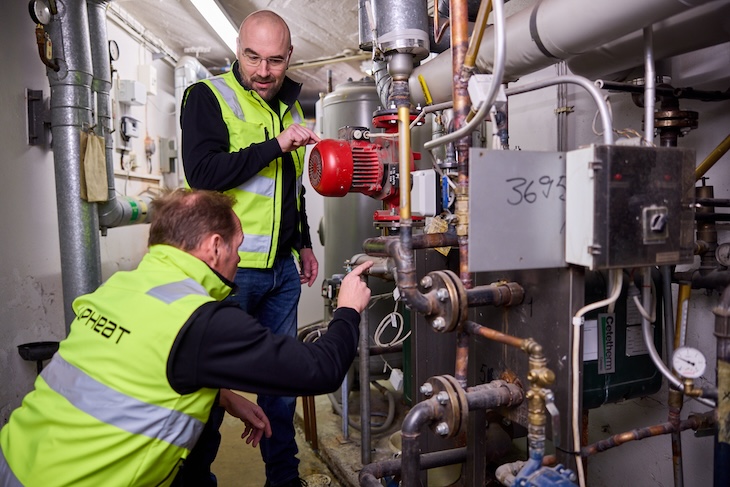Let’s say you need 100 apples for your family. Just 100, no more. Would you go and pick 1000 apples and throw away 900 (assuming they are all equally good in quality)? No, you would not. Furthermore, if you already had 80 similar apples in storage, would you throw those apples away and pick new ones? Of course not.
This is what industrial heat in its traditional form looks like. Sure, most of the current industrial processes were initially created during a period when energy (the apples of the simple example) was abundant, and you could get more just by opening a valve or sending a purchase order. And sure, there was not a useful technology available before Upheat to turn low-temperature heat into a usable form. But for some time now, the energy balance of industrial operations has been a topic of great importance, both for economic and ecological reasons. But until now, the only way to create heat at 140°C has been to burn something at 1600°C and then discard the rest*.
This is about to change.
Re-use even the lower-temperature waste heat
Most industrial production facilities waste heat. The available high-temperature waste heat has already been used in many places, but the lower-temperature heat (usually 50°C to 80°C) is often dissipated into the atmosphere, as there has been no feasible way to reuse it. This heat can come from many sources – cooling, compressed air, drying, pasteurizing, chemical reactions, and flue gases of steam generation, to name a few. In most cases, reusing this heat has not been technically or economically feasible, but this is about to change.
Upheat high-temperature heat pumps can take this heat and convert it to a temperature that the production can use. The first law of thermodynamics states that energy cannot be created or destroyed, but it can change its form. This is exactly what a heat pump does: it takes units of lower-temperature heat and turns them into higher-temperature heat with the help of a compressor filled with refrigerants.
In the case of Upheat, the heat pump can take a waste heat source of, say, 50°C and turn it into usable heat of, say, 140°C. The sink temperatures of our products (100°C to 200°C) are useful for the different production processes.
Go Circular in Heat Generation
As the technology to transform the waste heat into a usable format now exists, your company can go circular in heat generation. Well, at least significantly more circular as there is always some need for additional energy for the process. For the remaining heat, it’s possible to only generate the temperature the processes need, not burning a much higher temperature flame with low recovery efficiency. With a payback of 1 to 3 years, the Upheat high-temperature heat pumps make the transformation of the production energy balance possible for every business.
*) We know the comparison is not apples to apples (pun intended), but you get the point. Losses of using a flame to heat something to 140°C are too high to tolerate when looking for sustainability.
